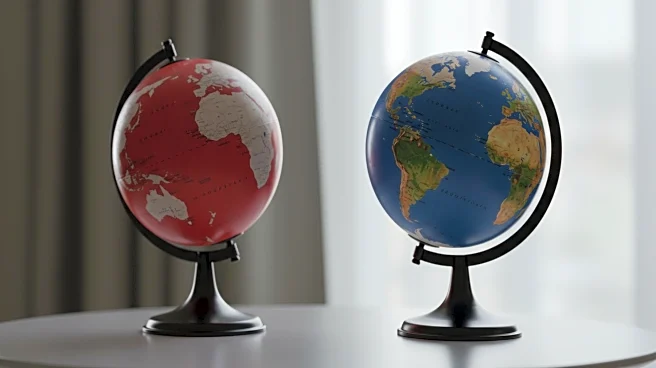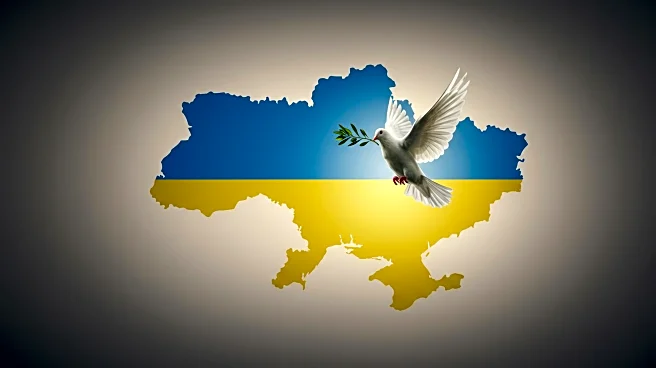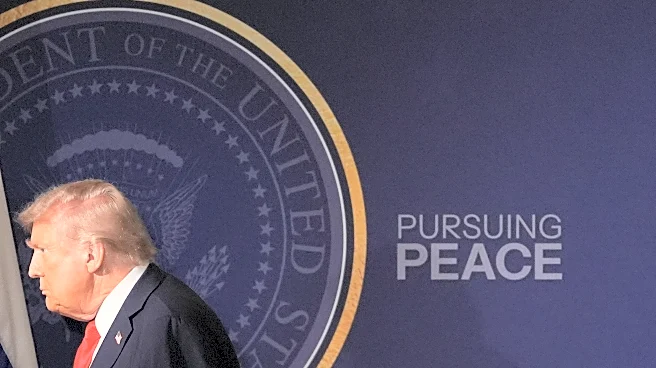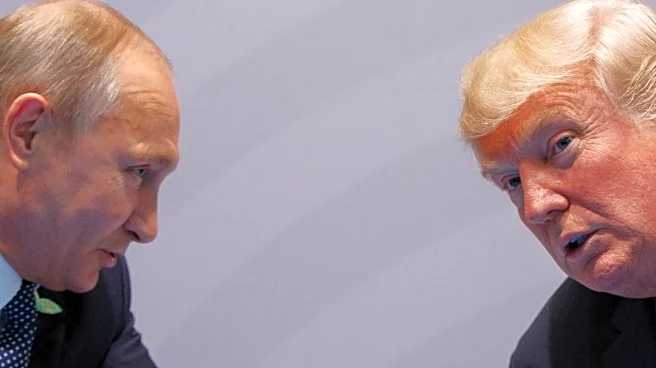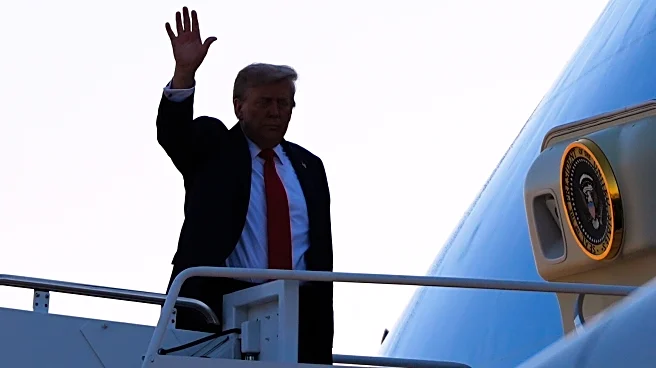What's Happening?
President Trump has called for a comprehensive peace agreement to end the ongoing war in Ukraine, diverging from the stance of U.S. allies in Europe and Kyiv, who prioritize a ceasefire first. This announcement followed a summit with Russian President Vladimir Putin in Alaska, where Trump emphasized the need for a lasting peace rather than temporary ceasefires. Ukrainian President Volodymyr Zelensky and European leaders, including German Chancellor Friedrich Merz, have stressed the importance of a ceasefire as a precursor to any peace talks. Despite the summit, no concrete steps towards a ceasefire were achieved, and discussions are set to continue with Zelensky's upcoming visit to the White House.
Why It's Important?
The call for a comprehensive peace agreement by President Trump marks a significant shift in U.S. foreign policy, aligning more closely with the Kremlin's position. This move could potentially alter the dynamics of international support for Ukraine, as European leaders have been firm on the necessity of a ceasefire before any peace negotiations. The decision has sparked criticism from U.S. political figures, including Senate Minority Leader Chuck Schumer, who accused Trump of siding with an authoritarian regime. The outcome of these negotiations could have profound implications for the geopolitical landscape, affecting U.S.-Russia relations and the stability of Eastern Europe.
What's Next?
Further discussions are anticipated as President Zelensky is scheduled to visit the White House, where he will meet with President Trump. The meeting aims to establish a framework for future talks with President Putin. European leaders are also expected to convene to discuss their stance and potentially join the discussions between Trump and Zelensky. The international community will be closely monitoring these developments, as the outcome could influence ongoing sanctions against Russia and the security guarantees for Ukraine.


